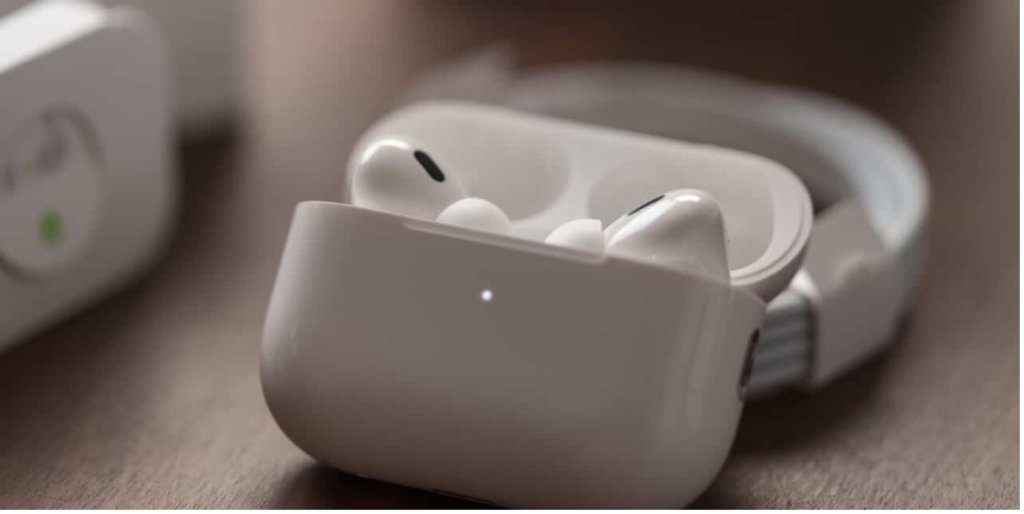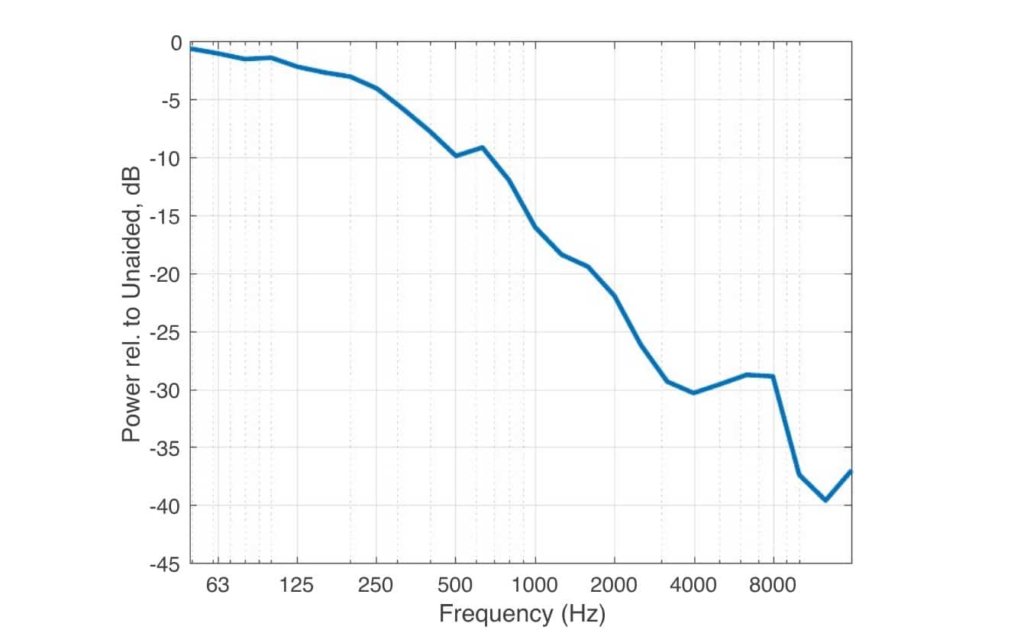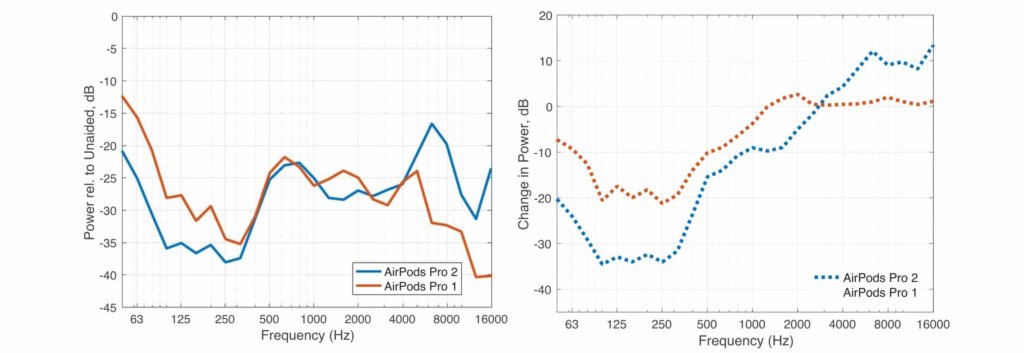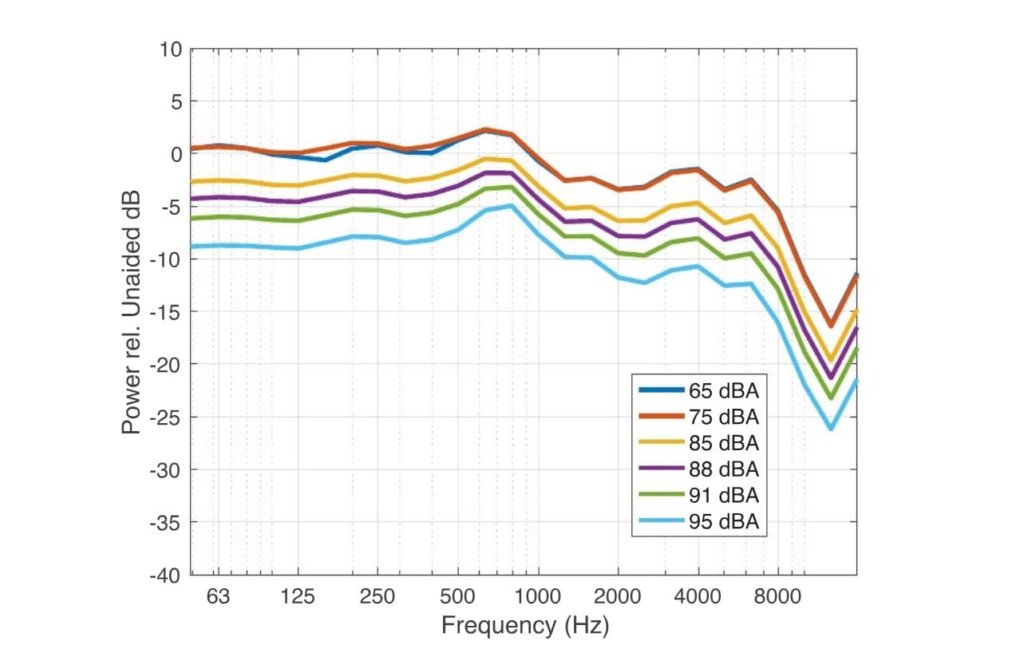Evaluating Apple AirPods Pro 2 Hearing Protection and Listening
From: Evaluating Apple AirPods Pro 2 Hearing Protection and Listening (hearingreview.com).
Used with Permission HearingReview.com (June 2023)
Jun 12, 2023 | Research | 0 |

The active noise cancellation technology in the AirPods Pro 2 earbuds effectively reduces ambient noise levels by an average 27 dB across frequencies.
This study evaluated the active noise cancellation (ANC) performance of the first and second-generation Apple AirPods Pro earbuds. Acoustic measurements showed that the newly released AirPods Pro 2 earbuds provided a significant 12 dB improvement in low-frequency noise reduction compared to the original AirPods Pro, with an overall average noise reduction of 27 dB across frequencies. The results demonstrate the effectiveness of advanced ANC technology in providing hearing protection in loud environments and reducing exposure to damaging sounds that may cause hearing damage. Furthermore, the results suggest that ANC can enhance music listening and phone and video call experiences by reducing ambient noise and improving audio clarity.
Noise-induced hearing loss is a prevalent and debilitating condition that can significantly impact an individual’s quality of life and social interactions. Frequent and excessive exposure to loud sounds can harm the cells and membranes in the cochlea, leading to permanent hearing damage. While earplugs and earmuffs are mandatory in industrial workplaces to prevent noise-induced hearing loss, many people fail to use them or follow safe listening practices in their daily lives. Increased use of smartphones as personal audio devices for extended periods, particularly in noisy environments or engaging in recreational activities involving loud noise exposure, has increased the risk of permanent hearing damage, particularly among teenagers and young adults. In fact, it is estimated that over 1 billion young people are at risk of hearing loss from recreational listening.1,2

People with hearing impairment are particularly vulnerable to the negative impacts of prolonged exposure to loud environmental noises. These individuals experience a lower tolerance to loud noise levels and have degraded and sluggish neural responses when exposed to loud sounds, reducing their ability to easily access speech information. As a result, they face significant communication challenges in noisy conditions.
Active noise canceling (ANC) headphones offer an effective solution to prevent environmental noise from reaching the ear canal. By using outward-facing and inward-facing microphones on the headphones to pick up ambient noise, ANC generates inverted, “anti-phase” sound waves to cancel the noise. This reduces environmental noise levels, protecting hearing and making listening to headphone audio in noisy environments easier.
We evaluated the ANC performance of the popular Apple AirPods Pro 2 earbuds through acoustic measurements in the laboratory, building on our previous work that evaluated the customized amplification and directionality features of the original AirPods Pro.3,4 The findings offer valuable insights into the potential benefits of AirPods Pro in protecting against noise-induced hearing loss and further enhancing listening experiences in noisy environments, especially for people with hearing difficulties.

Study methods
Acoustic laboratory testing measured the amount of attenuation achieved with AirPods Pro 1 and 2 with different device settings and noise conditions.
Equipment and set-up: Acoustic measurements were carried out in a laboratory test room with loudspeakers in a horizontal circular array of diameter 3.4m. Noise was presented at 0°, ±45°, ±90°, ±135°, and 180°, at 55, 65, 75, and 85 dBA, calibrated using a free-field microphone located at the center of the array. Audio recordings were obtained using the B&K Head and Torso Simulator (HATS) Type 4128C mannikin with a built-in ear simulator (standard IEC 60318-4 (711)), as shown in Figure 1. HATS is widely used in electroacoustic tests of consumer audio products, hearing aids, and hearing protectors.
Noise stimuli: We obtained 8-channel background noise audio files from the European Technical Standard Institute (ETSI) database, which accompanies the technical specification for measuring the performance of active noise cancellation headsets (ETSI TS 103 640, 2020). Pink noise was chosen as it has approximately equal power in each octave band. Additionally, street/traffic noise, which has more dominant low-frequency content, was selected to give a more realistic representation of ANC performance in practical situations. Analysis was performed over a 10-second time period.
Devices: Measurements were performed using the Apple AirPods Pro 1 earbuds (firmware version 4E71) and AirPods Pro 2 (firmware version 5A4B8), each paired with an iPhone running iOS 15. To ensure a good seal with the ear canal, the earbuds were inserted into the soft rubber pinnae of HATS, and the Ear Tip Fit Test was performed on the iPhone to verify the seal.
Test conditions: Measurements were performed under the following conditions:
- Unaided (without any device in the ears)
- With AirPods Pro, with Noise Control = Off
- With AirPods Pro, with Noise Control = Noise Cancellation
- With AirPods Pro, with Noise Control = Transparency

Results
The effectiveness of ANC is shown by analyzing the power of the audio signal received at the eardrum, analyzed in one-third octave frequency bands, for test conditions 2 and 3, relative to the unaided condition.
Figure 2 shows the effect of passive attenuation in the AirPods Pro 2 (Noise Control = Off compared to unaided). The tight seal of the ear canal provides approximately 30 dB attenuation of frequencies above 3000 Hz; however, low frequencies are not effectively blocked.
When ANC is on (Noise Control = Noise Cancellation), low-frequency sounds are significantly reduced. Figure 3a depicts the attenuation achieved for the Gen 1 (red) and Gen 2 (blue) earbuds. The AirPods Pro 2 achieved around 35 dB at 250 Hz and an average overall attenuation across frequencies of 27 dB. The measurements using street/traffic noise produced similar attenuation curves.
Figure 3b highlights that AirPods Pro 2 showed a significant improvement in ANC performance compared to the first-generation AirPods Pro, achieving an additional 12 dB attenuation of low-frequency sounds. However, this improvement in low-frequency attenuation comes at the cost of slightly less high-frequency attenuation above 3000 Hz, with a reduction of 5-10 dB.

Adaptive Transparency
Transparency mode lets ambient sounds pass through the earphones, keeping the wearer aware of their surroundings. In addition, the new Adaptive Transparency feature automatically reduces loud sounds.
Figure 4 shows the power of pink noise received at the eardrum in one-third octave frequency bands, with input sound levels ranging from 65 to 95 dBA for AirPods Pro 2 relative to the unaided condition. It can be observed that at sound levels 75 dBA and below, the power spectrum of the noise received at the ear is very similar to the baseline condition. However, at 85 dBA and above, the AirPods Pro 2 reduces the audio output by an amount that increases with sound level. At 95 dBA, the reduction is around 8-10 dB, much less than the low-frequency attenuation of ANC. This consistent attenuation across frequencies from 50- 4000 Hz suggests the use of different noise reduction signal processing. Additionally, there is minimal delay in activating the noise reduction after the onset of the loud sound.
These findings demonstrate that the new Adaptive Transparency feature in the AirPods Pro 2 reduces ambient noise exceeding 85 dBA when in Transparency mode, bringing the volume down to around 82-85 dB and resulting in a more comfortable and safer listening experience.
Discussion
The results demonstrate that ANC technology in AirPods Pro effectively reduces ambient pink noise, with an average overall attenuation of 27 dB. In addition, AirPods Pro 2 show a substantial improvement in low-frequency attenuation compared to AirPods 1. This improvement is particularly noticeable since many environmental noises have dominantly low-frequency content (e.g., airplanes, trains, road noise, fans and air-conditioning, and industrial noise). The perceived effect is that low-level ambient noises are almost completely imperceptible, while louder environmental noises are greatly diminished. The AirPods Pro 2 shows slightly less reduction in frequencies above 3000 Hz than the AirPods Pro 1, but still effectively reduces them. This objective measurement of attenuation serves as a reliable indicator of the active noise cancellation improvements described in consumer and product reviews. It gives a firm basis for people considering upgrading to the newer AirPods Pro model.
Active noise canceling (ANC) can be crucial in reducing the risk of hearing loss resulting from prolonged exposure to loud noise. According to the guidelines set by the U.S. National Institute for Occupational Safety and Health (NIOSH) and Environmental Protection Agency (EPA), the allowable exposure time reduces by half for every 3 dB increase in noise level. By reducing the level of ambient noise, ANC reduces the “noise dose” and extends the allowable exposure time. For example, if the exposure time for 90 dB is 8 hours, reducing the noise level by 3 dB would double the allowable exposure time to 16 hours. With a reduction of 27 dB, the allowable exposure time is increased even further. However, it is essential to note that while exposure to noise levels below 85 dB is generally considered safe, limiting exposure to loud sounds is still recommended.
Other benefits of ANC are that it can significantly improve the headphone audio experience by making calls and streamed media clearer and easier to understand and eliminating the need to increase volume in noisy environments. This benefit is especially pronounced for individuals with hearing difficulties who have trouble filtering out background noise. Reducing noise exposure can also improve overall well-being. A study found that increased ambient noise was linked to higher heart rates, indicating that noise can cause physiological stress.5
However, ANC headphones may not be suitable for activities that require situational awareness, especially for safety reasons. As an alternative, the new Adaptive Transparency feature in the AirPods Pro 2 automatically reduces the level of loud ambient noise over 85 dBA that passes through to the ear. However, it provides less noise reduction compared to ANC. This feature enables wearers to remain aware of important sounds, like sirens or alarms, while keeping them at safe sound levels.
Finally, it should be noted that for live conversations in noisy environments, other hearing features, like Headphone Accommodations, Ambient Noise Reduction, and Conversation Boost, may be more effective than ANC, which may block out the speaker’s voice. These features improve audibility, reduce background noise, and focus on the person speaking in front, resulting in better speech intelligibility and listening comfort.3,4
The study results show that the active noise cancellation technology in the AirPods Pro 2 earbuds effectively reduces ambient noise levels by, on average, 27 dB across frequencies, reducing the risk of noise-induced hearing loss. In addition, the AirPods Pro 2 showed substantial improvement in low-frequency attenuation compared to its predecessor, making for a safer and clearer listening experience. With effective hearing-related features such as ANC and automatic reduction of harmful noises combined with additional features previously evaluated, such as personalized amplification, and microphone directionality, the AirPods Pro offers considerable benefits for those seeking to protect their hearing and have clear audio experiences in noisy environments. HR
References:
- World Health Organization. Make listening safe. Geneva, Switzerland: World Health Organization; 2015. Available at: https://apps.who.int/iris/bitstream/handle/10665/177884/WHO_NMH_NVI_15.2_eng.pdf
- Dillard LK, Arunda MO, Lopez-Perez L, et al. Prevalence and global estimates of unsafe listening practices in adolescents and young adults: a systematic review and meta-analysis. BMJ Global Health. 2022;7:e010501.
- Chong-White N, Mejia J, Galloway J, Edwards B. Evaluating Apple AirPods Pro with headphone accommodations as hearing devices. The Hearing Review. 2021;28(12):8-11.
- Chong-White N, Mejia J, Valderrama-Valenzuela J, Edwards B. Evaluation of Apple AirPods Pro with conversation boost and ambient noise reduction for people with hearing loss in noisy environments. The Hearing Review. 2022;29(4):24-27.
- Christensen JH, Saunders GH, Porsbo M, Pontoppidan NH. The everyday acoustic environment and its association with human heart rate: evidence from real-world data logging with hearing aids and wearables. R. Soc. Open Sci. 2021;8(4):201345. doi:10.1098/rsos.201345.
Correspondence: Nicky.chong-white@nal.gov.au

